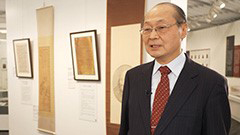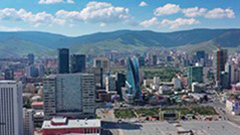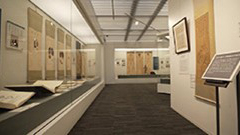For the achievement of Universal Health Coverage (UHC)
Universal Health Coverage (UHC), which is also included in SDG Goal 3 (health and welfare), have aimed for all people to access healthcare services without economic hardship.
JICA produced JICA-Net multimedia-based learning material, "The History of Medical Education and the Achievement of UHC"(external link) , as a part of cooperation with Juntendo University, which is based on the memorandum executed in the healthcare area between JICA and Juntendo University.
The material intends to enable people to look back on the history of Japanese medical education and to know how it has contributed to the achievement of UHC in Japan, and also to convey how this experience is being utilized for cooperation with developing countries.
Look back on the history of medical education in Japan
The material mainly overviews the history of Japanese medical education. Essential for achieving UHC is medical education that enhances the quality and quantity of medical care.
Firstly, the material explains compactly how the development of medical human resources focusing on doctors has been implemented with many complications since Edo era until today.
Next, it introduces the current situation surrounding Japanese medicine and doctors such as the declining birthrate and an aging population, and also explains new initiatives, for example, the medical education model core curriculum and a new doctor clinical training system.

The material explains compactly the history of Japanese medical education that has contributed to the achievement of UHC in Japan

The material also introduces the project in Mongolia, where Japan's past experiences are utilized effectively.
Lastly, it shows the project in Mongolia as an example of JICA's international cooperation, which has aimed to promote UHC.
In Mongolia, there are some similarities between problems faced by medical care and those in Japan such as the inconsistent quality of doctors and changes in disease-structure. For that reason, Japan's past experiences are utilized effectively. From 2021, an initiative targeting nurse training commenced as part of the second phase of the project.
The material consists of abundant collections and local voices
The part of Japanese medical history was made by full collaboration with the Department of Medical History, Juntendo University Graduate School of Medicine and Japanese Medical Education History Museum. Abundant collections owned by the museum were utilized. The professors, who are famous in the field of medical history in the university, participate as a supervisor and filming cooperator.
In the late half, in Mongolian example, in spite of the impact of COVID-19, we were able to take the voices of Japanese chief advisor and Mongolian counterpart into the material by the remote interviews. Moreover, by using the previous videos of medical practice training in Mongolia, the material shows the importance of education for doctors and the utilization of Japan's experience for the cooperation.

The part of Japanese medical history was made by full collaboration with the Department of Medical History, Juntendo University Graduate School of Medicine and Japanese Medical Education History Museum. abundant collections owned by the museum were utilized.
The material mainly intends to be used as pre-learning for training or remote training in the healthcare area, and as promotion of understandings for people who are involved in the government of developing countries and are interested in JICA's cooperation in the field of medical education.
The content of the material is helpful in a wide range, for not only government officials, medical workers, JICA trainees, international students in developing countries, but also for health professionals and medical students in Japan.
We hope that the material could be used widely and become a guide for the achievement of UHC.
SATO Rie
JICA Health Group 2, Human Development Department
*The Material(s) mainly applied
The History of Medical Education and the Achievement of UHC
This video material looks back on the history of how Japanese medical education has contributed to the achievement of UHC, and conveys how this experience is being utilized for the cooperation with developing countries.
In order for UHC, which is also included in SDG Goal 3 (health and welfare), to be achieved and for all people to access healthcare services without economic hardship, it is important that the quality and quantity of healthcare are appropriately ensured. This video provides an overview of the history of medical education, which has supported Japan's achievement of UHC, as it has faced many difficulties, from the beginning of modern medical education in the Edo period, through wars, to today's new challenges. It also highlights the case study of JICA's medical human resource development project in Mongolia, showing how Japan's experience is being used in cooperation with developing countries.
It is intended to be widely used as a reference by policy makers and health care professionals in developing countries, as well as a learning experience for health care professionals in Japan.




scroll